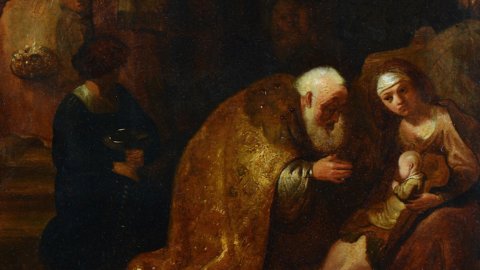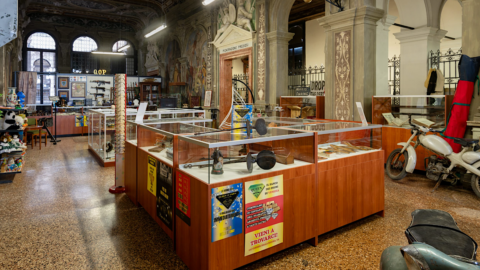This is the object of symposium “Rembrandt: Identifying the Prototype, Seeing the Invisible”, held this morning at the French Academy of Villa Medici, in Rome, in the presence of international scholars and experts and promoted by the Fondazione Patrimonio Italia (FPI), non-profit organization chaired by Guido Talarico aimed at enhancing the Italian cultural heritage.
The meeting represents the first appointment of the “Discovering Masterpiece” project, an initiative of the Fondazione Patrimonio Italia which aims to promote moments of cultural and scientific understanding, in Italy and abroad, for the study and dissemination of the masterpieces of Italian and international art belonging to Italian collections.
"Kick off the 'Discovering Masterpiece' project with the discovery of an absolute masterpiece by one of the most beloved artists of all time – declared the President Guido Talarico - it is a source of great pride for our Foundation, created with the aim of enhancing Italian private collections by proposing a new approach to collecting. The intent is to share with the general public sometimes unpublished works, as in this case, leaving them in Italy with the aim of making our country aware of the immense potential of one of its asset flagship, such as its artistic and cultural heritage, as a driving force for economic growth".
The work at the center of the symposium, which guarantees its attribution beyond a reasonable doubt, is a wonderful oil painting on paper applied on canvas, executed in 1632-1633, which shows the subject "The Adoration of the Magi" whose prototype, to this day, has been thought lost by Rembrandt scholars and survived only through copies, of which the best known are kept in St. Petersburg and Gothenburg.
The casual rediscovery, which took place in Rome, tells a compelling and fascinating story. An accidental trauma to which the painting was subjected in 2016 made it necessary to reframe it; only then, thanks to the experience and sensitivity of the restorer Antonella Di Francesco, intent on recovering and cleaning the work blackened by the ancient varnish, did the masterpiece come to light, giving way to studies.
"In the course of my work – says the restorer Antonella di Francesco - one of the most beautiful things in life can happen: the sudden awareness of being in front of a work by a very great author who reveals himself to you, who comes out of his opaque zone and chooses you to be redeemed from obscurity. This is the moment in which we need to overcome the vertigo capable of making us sink into that wonderful sense of belonging to history. It is a thrill that has no equal, which vibrates to the point of dragging you into an irrepressible impulse of morbid curiosity. I don't fight it and let myself be carried into the spell”.
The very rare technique, but typical of the Dutch master in the 30s, with which the work was created, its dimensions (54×44,5 cm), the same as a series of engravings by Rembrandt relating to the Life and Passion of Christ, are some of the elements that strongly support the attribution. the sketches,almost invisible in the painting to the naked eye but brought to light by IR technologies, they allow you to participate in the creative moment of the work in the moment in which it took shape in the author's hands showing its strength, technique and creative genius in line with the standards of Rembrant as well as an "Adoration of the Magi", a subject generally at the apex of the expressive potential of most artists.
The symposium, opened by greetings from Sam Stourdzeir, Director of the French Academy in Rome – Villa Medici, and by Guido Talarico, President of the Fondazione Patrimonio Italia, compared an exceptional panel: Marco Mascolo, Art Historian, author of “Rembrandt an Artist in Seventeenth-Century Europe”, Peter Matthaes, Director of the Art and Science Museum of Milan, Francesca Bottacin, Art Historian, Professor of Flemish and Dutch Art History at the University of Urbino "Carlo Bo", Stephen Ridolfi, Physicist for Cultural Heritage and Professor at La Sapienza, University of Rome ed Alessandro Caucci Molara, President of the Abraham Teerlink Foundation, Rome and President of the Advisory Board of Fondazione Patrimonio Italia.
An initiative, therefore, of great symbolic importance which is also reflected in the choice of a prestigious venue, such as Villa Medici, for tell the story of an international collecting, with a centuries-old tradition, based in Rome and that deserves to be disclosed and valued.





